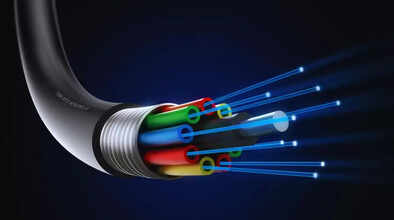Meta’s $10 Billion Undersea Cable to Make India a Global Data Connectivity Hub: Mumbai and Visakhapatnam Chosen as Key Centers

Meta’s Massive Waterworth Project to Connect India with the US, Brazil, and South Africa, Positioning the Country as a Core Player in Global Digital Infrastructure
Tech giant Meta Platforms has taken a significant step toward strengthening India’s position in the global digital ecosystem. The company has announced that Mumbai and Visakhapatnam will serve as the landing sites for its ambitious Waterworth undersea cable project, a massive network that will connect the United States, India, Brazil, and South Africa. With a planned span of nearly 50,000 kilometers, this subsea cable system is expected to transform India into a major hub for AI-driven data connectivity and digital infrastructure.
To execute this project in India, Meta has partnered with Sify Technologies as its official landing partner, marking a crucial collaboration for building the next-generation network backbone.
A $10 Billion Global Connectivity Plan
According to reports by The Economic Times, the total investment in Meta’s Waterworth project could reach $10 billion over the next 5 to 10 years. Of this, approximately $2 billion will go toward building the cable network, another $2 billion will be used for developing supporting components to enhance network capacity, and around $6 billion will be invested in establishing AI-focused data centers in India.
Interestingly, the W-shaped cable route will bypass the Red Sea Corridor, an area that has faced multiple disruptions due to regional conflicts and attacks, ensuring greater network stability and security for the entire system.
Rising Competition in India’s Data Network Sector
The undersea cable ecosystem in India has expanded rapidly over the past three years. Global and domestic players are racing to strengthen their presence in the connectivity market.
-
Google has already partnered with Sify Technologies for its Blue Raman cable project.
-
Bharti Airtel launched the Sea-Me-We 6 system in December 2024.
-
Reliance Jio is actively developing the India Asia Express (IAX) and India Europe Express (IEX) cable networks.
With Meta entering the space on such a large scale, competition is set to intensify among major international tech firms and Indian telecom giants such as Jio, Airtel, and Tata Communications.
India’s Big Opportunity in the AI and Data Economy
Scheduled for completion by 2030, the Waterworth project could play a pivotal role in establishing India as a global hub for AI infrastructure. Meta’s strategic focus on data localization aligns with India’s evolving regulatory landscape, which emphasizes the need to store and manage data within national boundaries.
Experts believe that the project will accelerate India’s data center boom, create new employment opportunities, and position the country as a critical player in the global digital supply chain. It will also strengthen India’s capacity to handle massive AI workloads, supporting the growing demand for cloud computing, content delivery, and smart services.
Fast-Growing Market Potential
According to data from the Telecom Regulatory Authority of India (TRAI), the global submarine communication cable market is projected to grow from $27.57 billion in 2023 to $40.58 billion by 2028. The Indian subsea market, particularly within the Asia-Pacific region, is among the fastest-growing and is expected to reach $78.6 million by 2030.
Companies such as Sify and Lightstorm are expected to benefit immensely from this growth by offering cost-efficient landing infrastructure and leveraging India’s strategic geographical advantage.
A Step Toward a Digitally Connected Future
Meta’s Waterworth project represents more than just a technological investment—it is a statement about India’s growing influence in the global data economy. By connecting major continents through a high-speed undersea network, Meta is not only expanding digital accessibility but also laying the foundation for a future driven by AI, cloud computing, and next-generation digital communication.
With Mumbai and Visakhapatnam at the center of this transformation, India is set to emerge as a global digital hub, powering the world’s data flow for decades to come.

